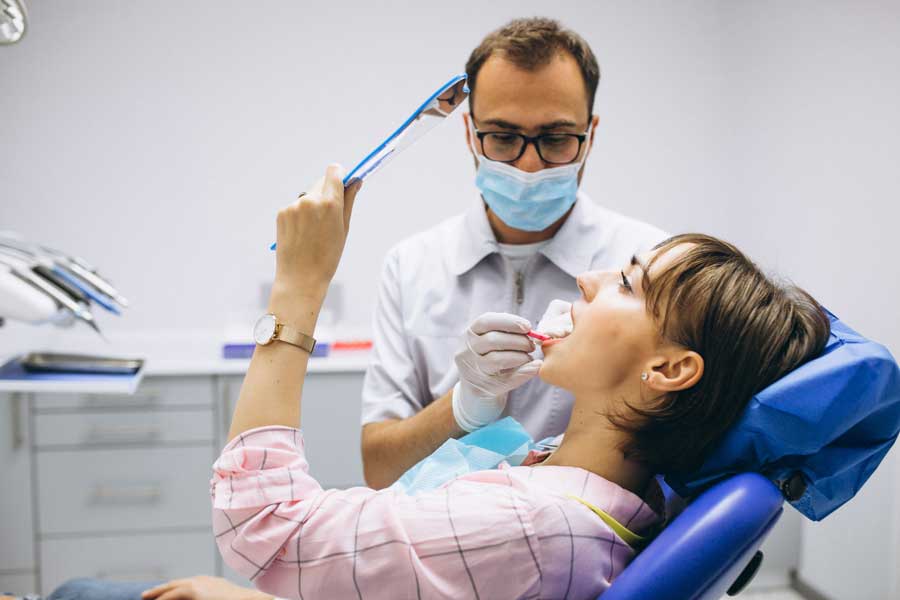In the age of rapid technological advancement, even the world of dentistry has not been left untouched by innovation. The emergence of digital dentistry is revolutionizing the way oral health is managed and treatments are administered. This comprehensive guide explores the latest breakthroughs and technologies that are reshaping the landscape of dental care.
Understanding Digital Dentistry
Digital dentistry refers to the use of digital technologies and computer-based systems to carry out dental procedures. It encompasses a wide range of applications, from diagnosis and treatment planning to the actual delivery of dental care. This digital transformation has multiple facets:
- Digital Imaging: Digital X-rays, cone-beam computed tomography (CBCT), and intraoral scanners have replaced traditional film-based radiography. These technologies offer high-resolution images with reduced radiation exposure, allowing for more precise diagnosis.
- Computer-Aided Design/Computer-Aided Manufacturing (CAD/CAM): CAD/CAM systems enable the design and fabrication of dental restorations like crowns, bridges, and veneers with incredible precision. These restorations are not only more accurate but also visually superior.
- 3D Printing: 3D printing technology has found its way into dentistry, facilitating the creation of dental models, surgical guides, and even dentures. It streamlines the production process, making it faster and more cost-effective.
- Teledentistry: The advent of telehealth has given rise to teledentistry, which allows patients to consult with dentists remotely. This is especially valuable in rural areas where access to dental care may be limited.
- Artificial Intelligence (AI): AI is being used to analyze patient data, aid in treatment planning, and even assist in the detection of oral diseases, such as cavities and gum disease, at an early stage.
Innovations in Digital Dentistry
1. Intraoral Scanners
Intraoral scanners have revolutionized the way impressions are taken. Instead of using uncomfortable and often messy impression materials, dentists can now use handheld scanners to create precise 3D models of a patient’s teeth and gums. This not only enhances patient comfort but also improves the accuracy of restorations and orthodontic treatments.
2. 3D Printing
3D printing has found widespread applications in dentistry. It’s used to produce dental models for treatment planning, create surgical guides for implant placement, and even manufacture dentures and crowns. This technology allows for customization on a level never before possible.
3. Teledentistry
Teledentistry has gained significant traction, especially in the wake of the COVID-19 pandemic. It enables patients to receive consultations and follow-up care remotely, reducing the need for in-person visits. This is particularly beneficial for patients in remote areas or those with mobility issues.
4. AI-Assisted Diagnosis
Artificial intelligence is being harnessed to analyze radiographs and patient records. AI algorithms can detect abnormalities and assist in diagnosing conditions like cavities and periodontal disease. This not only improves accuracy but also speeds up the diagnostic process.
5. Laser Dentistry
Lasers have become a staple in modern dental practices. They are used for a variety of procedures, including cavity detection, gum disease treatment, and even teeth whitening. Laser dentistry is less invasive, reduces discomfort, and promotes faster healing.
6. Augmented Reality (AR)
AR is making its way into dental education and patient communication. Dentists can use AR to show patients a virtual representation of their dental issues and potential treatment outcomes. This enhances patient understanding and engagement.
7. 3D Cone Beam Imaging
Cone beam CT scans provide 3D images of the entire oral and maxillofacial region. These scans are invaluable for planning complex procedures like dental implant placement, orthodontic treatment, and oral surgery.
Advantages of Digital Dentistry
The shift to digital dentistry offers numerous benefits for both dental practitioners and patients:
- Precision: Digital tools provide unparalleled accuracy in diagnosis and treatment planning, leading to better outcomes.
- Efficiency: Procedures that once took multiple appointments can often be completed in a single visit, thanks to CAD/CAM and 3D printing.
- Patient Comfort: Digital impressions are far more comfortable than traditional molds, reducing patient anxiety.
- Cost-Effective: While the initial investment in digital technology can be substantial, it often leads to long-term cost savings due to reduced chair time and the need for fewer remakes.
- Early Diagnosis: AI and advanced imaging technologies enable early detection of oral health issues, allowing for prompt intervention and preventing more extensive treatments.
Challenges and Future Directions
Despite its many advantages, digital dentistry is not without challenges:
- Cost: Acquiring and maintaining digital equipment can be costly, which may deter some dental practices from adopting these technologies.
- Training: Dentists and dental technicians need specialized training to use digital tools effectively. Ongoing education is essential to keep up with rapidly evolving technology.
- Data Security: Protecting patient data and ensuring compliance with privacy regulations is a critical concern in digital dentistry.
- Integration: Dental practices need systems that can seamlessly integrate various digital tools into their workflow.
As digital dentistry continues to evolve, it holds the promise of delivering even more precise, efficient, and patient-centric care. The ongoing synergy between technology and dental expertise is shaping the future of dental care, ensuring that patients receive the best possible treatment while dentists work with greater precision and ease. As we look ahead, the future of dental care is indeed digital.


